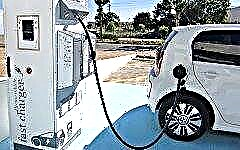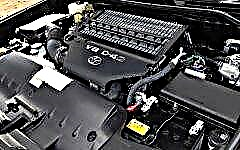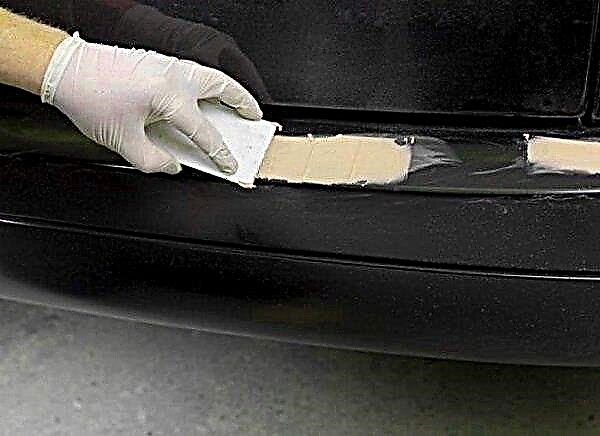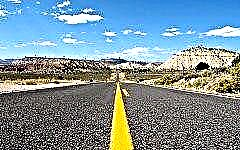

The content of the article:
- The basics
- Rating of the best roads in the world
- European roads
- USA - the birthplace of concrete highways
- Innovation in road construction
Traveling is a long-standing passion of man. The image of the road leading to the horizon has become a symbol of human search and inspiration.
But today the road is not just an image or a place where people travel on foot. Cars move along the roads, and car owners do not care which road it is.
The quality of highways is regularly compared in world rankings, road engineers are constantly developing new construction technologies. Let's see what heights the highways have reached in different parts of the world.
The basics

It is surprising, but 202 years ago, almost before the beginning of the era of automobiles, the Scottish engineer John Loudon McAdam published his work "Notes on the modern system of road construction", the main provisions of which are relevant to this day.
The engineer proposed to build roads according to the principle of a layered cake: at the bottom - a base made of a layer of large stones, on top - several layers of gravel, with each layer ever finer. The gravel layers were to be filled with tar. In order for the layers to adhere to each other, they should be tamped with a roller.
In the same book, it was described that the road should be raised above the general level of the ground and should have a slightly convex shape so that rainwater could drain from it without hindrance.
Two centuries have passed since then, and despite the fact that a number of roads continue to be built according to the technology described by McAdam, new construction methods have appeared that bring good results.
Rating of the best roads in the world

Last September, the World Economic Forum published its Competitiveness Report 2017-2018. In it, among other indicators of the countries whose data were analyzed in the report, there is also a list of countries in which the roads are of the best quality.
Based on the data of this report, the best roads are located in Asia and European countries: in the top five of the list are countries such as the United Arab Emirates, Singapore, Holland, Japan and Austria. The next five places are occupied exclusively by the European Sobza countries: France, Switzerland, Portugal, Denmark and Finland. But the United States, with its famous high-speed highways, took only 13th place in this ranking.
European roads
Speaking about European roads, it is difficult to talk about any one country: Europe is a territory where different climates and landscapes coexist, which means that the construction of roads requires different approaches.
German pedantry

Photo: German Autobahn
Despite the fact that in the above-mentioned rating Germany took only 11th place, its autobahns in Russia have long been a symbol of the quality and reliability of roads that allow cars to drive on them at high speed.
The very first autobahn in Germany is already at a venerable age - it is more than 80 years old. Many German roads were built in the thirties and forties of the last century. They have survived to this day, since they were built with the expectation of moving heavy military equipment, even tanks. That is why the current load does not harm them.
German highways are distinguished by an almost two-meter multi-layer "cushion", which is covered from above with asphalt or reinforced concrete. The "pillow" of the road consists of several layers:
- obligatory frost-resistant base;
- a layer of a mixture of sand and crushed stone, reinforced with a cement mixture;
- a layer of cement concrete.
The builders meticulously observe the technology, and this is an important factor that, along with the high quality of the materials used in the construction, affects the quality of the result.
For example, while heavy-duty concrete is hardening, the road section under construction is covered with a film coating, which protects the cover that has not yet "risen" from the sun and atmospheric precipitation.
There can be no question of laying asphalt "in a puddle", which our domestic road builders often sin with - if it rains before laying the asphalt layer, German builders will calmly and methodically wait until the road is completely dry, and only then will they start pouring asphalt mass.
Naturally, the road, like any engineering and technical structure, has its own reasonable period of use. Over time, pits and other damage appear on it. This is the time to make repairs. In Germany, such repairs are carried out by companies specializing in the maintenance of motorways. They do it at their own expense.
Repair of the roadway in our understanding, when the road workers gouge holes in the asphalt and smear them with asphalt, the Germans cannot understand. Patching repairs are incomprehensible to the Germans in principle - they replace a large section of the road at once, as they seek to avoid its subsequent destruction.
English quality

Photo: road in Great Britain
Great Britain has more than 340 thousand kilometers of roads, mostly asphalt. Here, patching is not neglected, but, unlike our Avtodorovites, English repair crews make it exclusively on a planned basis, without waiting for potholes to appear.
An interesting feature of English roads is the same transverse slope, which was mentioned by the Scotsman McAdam: a road with such a profile dries up quickly after rain, as precipitation flows from it towards the curb and further into the downpour. Garbage, foliage also linger at the curb, from where they are removed with specialized equipment.
City roads are equipped not only for the convenience of drivers, but also for the convenience and safety of pedestrians. Bus stops have transparent screens that protect passengers from splashes and car exhaust from the road. In the areas where pedestrians enter the road at the crossings, a special non-slip coating has been laid.
Finnish resourcefulness

Photo: road in Finland
Despite the fact that Finland is a country with a harsh climate, it ranks tenth in the international rating for its quality of roads. The reason is that Finnish road builders, like their German neighbors, pay a lot of attention to the quality of the multi-layer "cushion" that is the basis of the road.
Another problem for Finland besides the harsh climate is an abundance of unstable peat and clay soils... In order to get a stable high-quality roadbed, Finnish craftsmen pre-stabilize the soil by introducing special additives into it.
Finland is one of the rare countries where the quality and stability of not only concrete and asphalt roads, but also simple dirt roads is monitored.
USA - the birthplace of concrete highways

Photo: American road junctions
The American road network is distinguished by multi-level interchanges and a large length of highways, which have been without major repairs for almost decades.
Unlike most European roads, American highways are designed for much higher capacity and load. The first concrete road in the States was poured in the thirties of the twentieth century, and the first high-speed "concrete" opened in 1051.
Roads (highways) are divided here into groups according to their importance:
- US Highway Group;
- Interstate Highway Group.
The vast majority of highways in this country are made of concrete.An asphalt pavement is considered temporary, and if there is an asphalt road, it means that very soon it will be covered with asphalt on top, which significantly postpones the lines of overhaul.
Practical Americans preferred concrete as the main material, since it is concrete, despite its high cost in use, that provides a long service life, unpretentiousness and resistance to heavy loads.
The US auto industry predominantly produces large, heavy vehicles, and concrete roads perfectly hold this load, including from large-capacity trucks.
During the construction of the road, much attention is paid to preparatory work. A meter-deep hole is dug under the road, which is filled with a mixture of gravel, sand, clay and lime mortar. Lime prevents the created pillow from sagging from moisture over time.
A layer of asphalt up to seven centimeters is laid on top of the created "pillow", and concrete is already laid on top, which, thanks to this preparation, turns out to be absolutely even.
The quality of the material used in the construction of roads is closely monitored. Filling the next fragment of the road, special test cylinders are formed, which are then examined. If, according to the test results, it turns out that for some reason the concrete has become of poor quality, then the concrete is changed throughout the entire area.
American roads are fundamentally different from traditional European ones in that the main savings in this area in the United States come from their operation, which cannot be said about the "classic" asphalt roads.
Building "concrete" for a long time, but they require repair very, very long time ago. Actually, the very concept of repair in this case differs from the usual one: the concrete highway is simply rebuilt.
Innovation in road construction
Both in Europe and in the United States, road construction technologies are not standing still. Both the Old and the New World boast interesting solutions and findings in the field of road construction and use. Let's talk about some of them.
Holland: Road to the future

Photo: glowing road in Holland
As part of a government project to improve road safety at night, Heijmans road builders have painted stripes of fluorescent paint on the road.
During the day they accumulate sunlight, and at night they shine, giving off the accumulated energy, making the road easily distinguishable and visible. Bicycle paths are designed in a similar way, which gives the road surface a somewhat futuristic look.
The Dutch engineers are planning to create induction strips along the roads, which will provide contactless charging of electric vehicles.
Italy: Project Lybra

In the photo: smart "speed bump"
The idea of Italian engineers is to convert the wasted kinetic energy from car wheels into electrical energy. Such an engineering solution looks like a road bump, similar to a speed bump, which, in addition to limiting the speed and increasing the level of traffic safety, accumulates energy converted from pressing the wheels of a car.
Today in Milan, 10 devices have been created, united by a common circuit. The resulting highway produces up to 100 thousand kWh per year, which is enough for forty families.
EU innovation - plastic roads

In the photo: the project of the "plastic" road
Another innovation in Europe is increasing the strength of the road surface by adding a plastic binder to the asphalt concrete mass. On the one hand, the strength of the composition increases. On the other hand, recycled plastic is recycled, thus solving the environmental problems of the Old World.
Two ways of using recycled plastic have been proposed: adding granules directly to the bitumen mixture or making slabs for mounting the roadway. Which of the proposed options will be the most economical and effective - time will tell.
USA: solar panels on the roads

Photo: solar-powered road in America
The task of recharging cars on the road while driving is not a new idea, in the States it also has its own solutions.
In Idaho, engineer Bruceau has proposed a pavement with solar panels that will not only contribute to the country's energy system, but will also recharge cars while driving.
As in Holland, according to the plan of the American engineer, solar panels should also illuminate the roads at night and prevent ice formation on the road in winter.
Conclusion
It is not so easy to say unequivocally which roads are better, American or European. Their differences are due to the mentality of the countries, climatic and geodetic features.
Perhaps the Americans are more practical in their desire to “lose a day, and then fly in an hour,” that is, spend a lot of time and effort on the construction of a concrete highway, which then will not need to be repaired for a long time.
But Europe, with its pragmatism, will not yield to overseas Avtodorov, offering motorists high-quality, reliable and safe roads. It remains to wish the domestic road builders to use the experience of the countries recognized as the first in this area as efficiently as possible.











